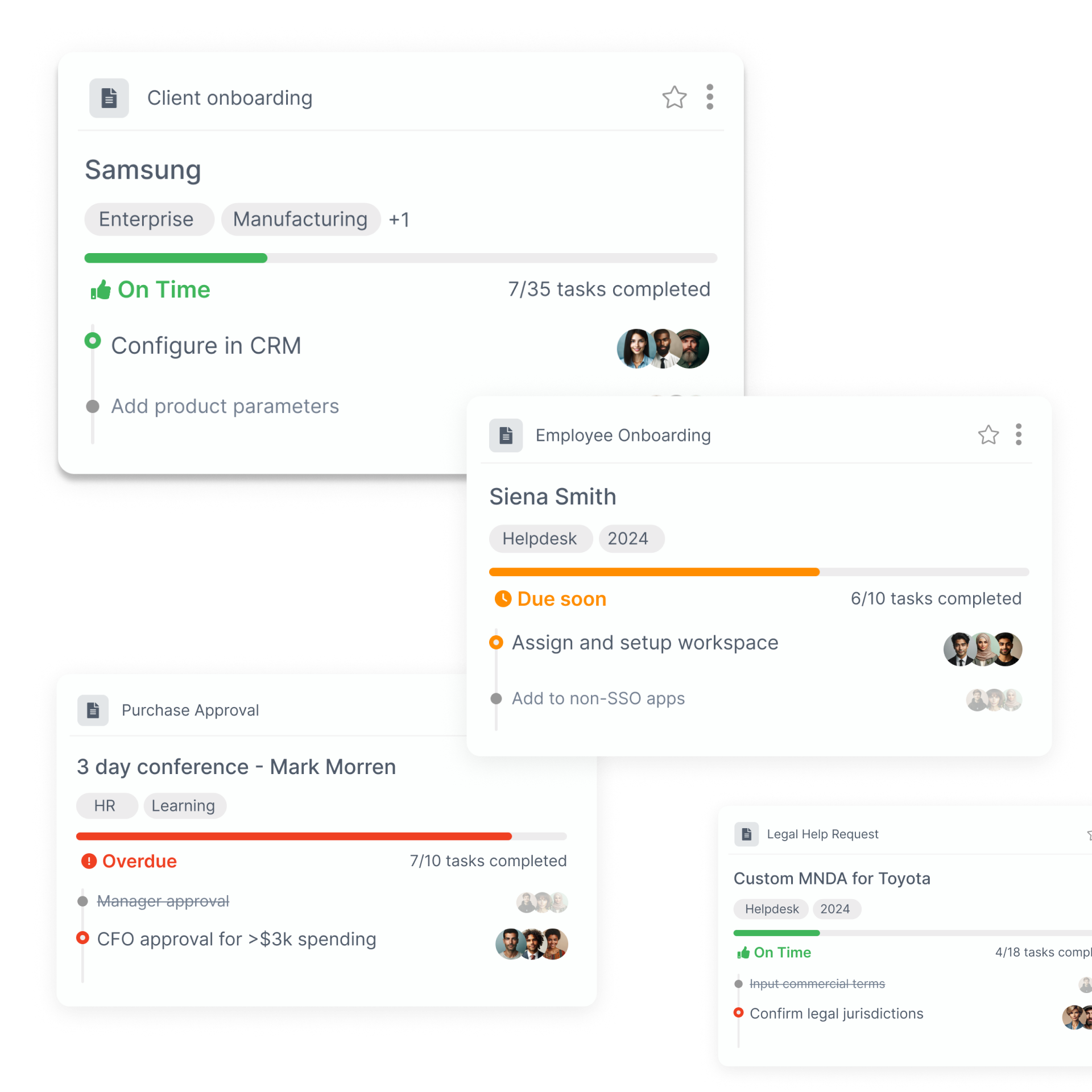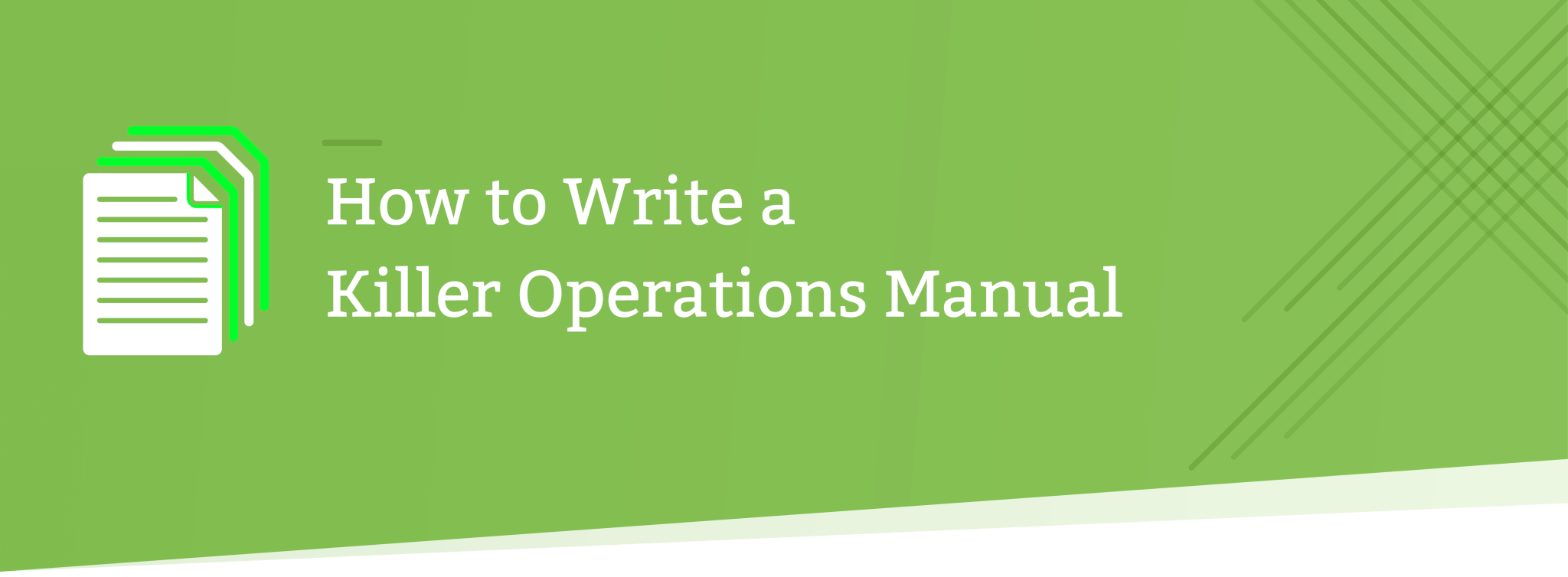
There comes a time in every business’s lifetime when it’s time to scale.
I’ve seen many business owners and CEOs hit rock-bottom when their company expanded from a small team of 10 to a bustling network of 40.
What?Isn’t expanding a good thing?
Yes! But many times, we aren’t ready for that expansion.
A few weeks ago, I was having brunch with my friend, Charlie. As we munched on piles of pancakes and sipped cups of coffee, our conversation moved from college recollections to workday banter.
His startup had broken even and was actually making money. They had tripled their team size.
Everyone’s dream right?
“We’ve actually run into a problem. Everything is the same as before, but our profits are going down. We’re spending money in places we never spent it before. I don’t know what to do.”
This fell into my expertise. Charlie wasn’t seeing the problem right in front of him.
“How has the employee onboarding been going Charlie? Are you still overseeing every person? That seems near impossible with that many people.”
“I wish! I used to collaborate with each team member and go over every piece of work. Now I just have to leave it to their judgment.”
And that’s when I jumped in with the magic of operation manuals.
Sure you can tell a new member what their responsibilities are, or have a trusted team member check out their work, but there is a right way to do things. There has to be a tried and true practice in place to maximize your company’s potential.
Charlie couldn’t oversee every single employee. But he needed systems in place that did what he wanted to do: guide his team to make the right decisions!
That’s what an operation manual is for. It takes care of the new employee, the emergency issue, the last-minute networking presentation. And you can perfect it with just 5 components.
Here’s how.
What is Tallyfy?
Tallyfy helps you document and automate tasks between co-workers and clients
Click here to learn about TallyfyWhat is an Operations Manual
An operations manual is the complete encyclopedia of all the company know-how. It stores all sorts of information, from company hierarchy to detailed procedures.
In your average operations manual, you’d see things like information on procedures (how do you carry out a specific process), emergency response procedures (what do you do in case something goes wrong), company contacts, and several other sections we’ll mention in a bit.
The manual is usually either a physical document (book, booklet, etc.) or an online resource.
It’s used for 2 things…
- Introduction to the Company – It’s an easy way for your new hires to get up to speed with the company operations.
- Appendix – You’ve probably heard the famous expression, “to err is human.” The business equivalent of that is “to make expensive mistakes with disastrous consequences is human.” To make sure that doesn’t happen, your employees can look back at the operations manual to double-check processes, emergency procedures, etc.
Why Would You Need an Operations Manual: Top 3 Benefits
Since you’re reading this article, chances are, you already know why you need an operations manual.
Your business has gotten to a point where it’s extremely hard to manage everyone. In a small team, whenever someone has a question, they can just come up to you & get a quick answer.
In a large organization, you really don’t have the time to hand-hold everyone. You need something that does it for you.
Other than scaling, though, there are several other benefits to using an operations manual…
Process Efficiency
Without clear process documentation, your employees will most likely do things their own way.
Sure, they’ll get the job done, and it’ll more or less be the same way you want it to be, but chances are, the results won’t be as good as they could be.
When it comes to business processes, you want everyone to be as efficient as possible. That means having a specific procedure on how to do the job and be as efficient as possible.
By documenting your processes, your employees will know how, exactly, to get the job done in the best way possible.
Lasting Tribal Knowledge
What really makes your organization stand apart from the competition is the know-how.
You and your employees know what it takes to deliver an amazing product or service. This knowledge, however, can be lost if a handful of key staff leaves the company.
And sometimes, that does happen. In most cases, employees can’t just get up and leave (without a months’ notice, at least). They’re required to pass on all the knowledge to their co-workers.
There are always exceptions to the rule, however. Think, health, extreme dissatisfaction with work, etc.
An operations manual helps store all that knowledge, making sure that it doesn’t just spontaneously disappear (and leave you in a lot of trouble).
Accountability
As we’ve mentioned before, it’s normal for your employees to make mistakes.
If you don’t arm them with the right knowledge and know-how to avoid any sort of disaster, they won’t be accountable for their work.
“Oh, no one told me that we’re not supposed to do things this way. Not my fault!”
And, well, they’d be right.
Having an operations manual makes everyone accountable. Everyone will have the know-how, and in any uncertain or unpredictable situation, they’ll be responsible for any mistakes they make.
How to Write an Operations Manual
First, you need to pick the format.
More often than not, it’s a standard document. You can either create a booklet, mini-book (if you’re part of a large organization), or something in-between.
If you’re a more tech-savvy organization, you could even go for an online resource. Confluence, for example, is a very popular knowledge base software. You can create your own company “wikis” and store just about any kind of information.
Even if you decide to go with a standard document, it might still be better to have it published online and give access to your employees. The problem of having physical copies is that you can’t make changes to it – you’d have to re-print the entire thing for that.
For documenting processes or procedures specifically, you’re better off using the dedicated online software.
BPM software, such as Tallyfy, allows you to create digital procedures.
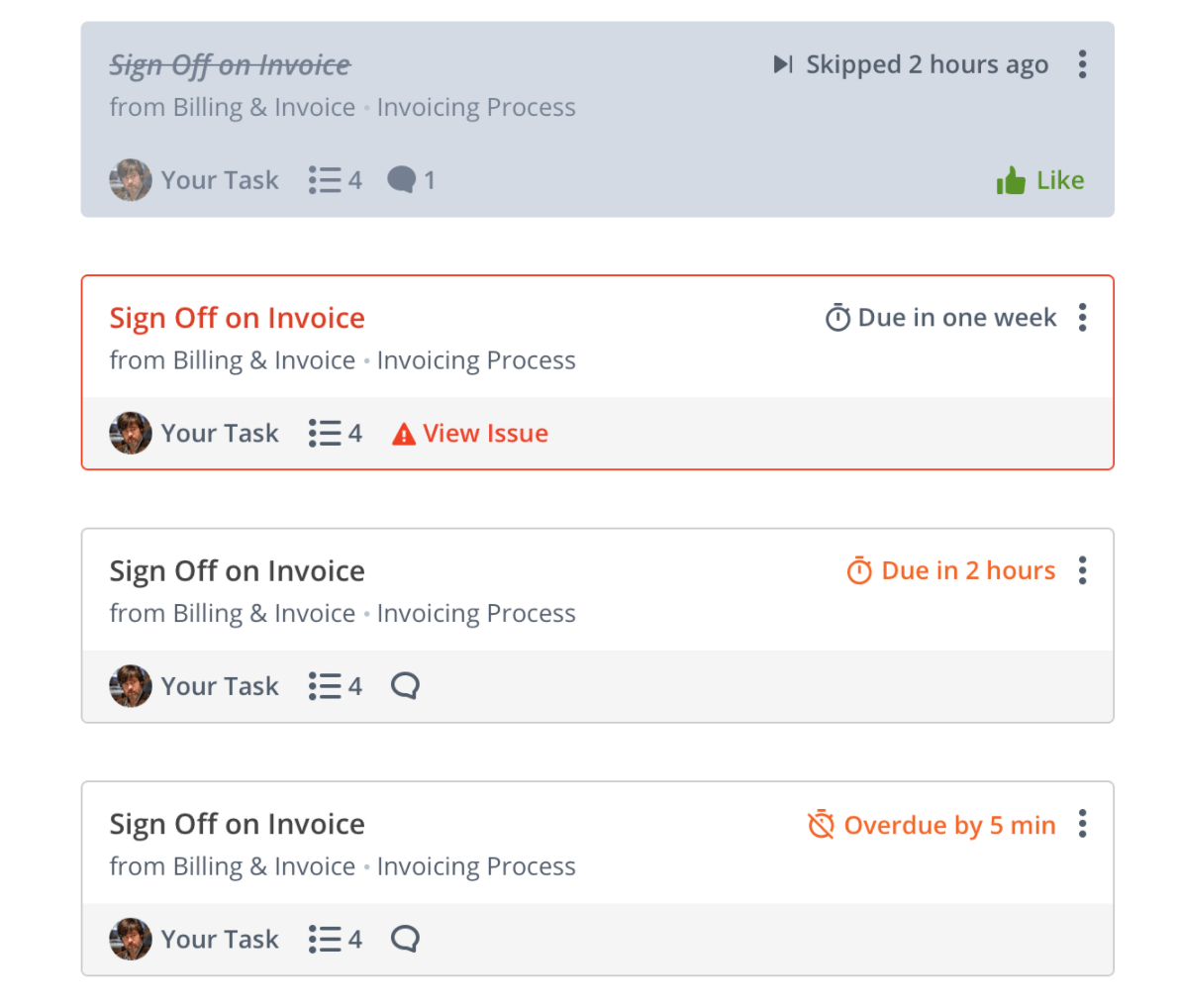
The added benefit here is that it’s not just documentation – the software also manages the processes. Rather than having to physically keep track of what your employees are up to, all you have to do is check out process status on your dashboard.
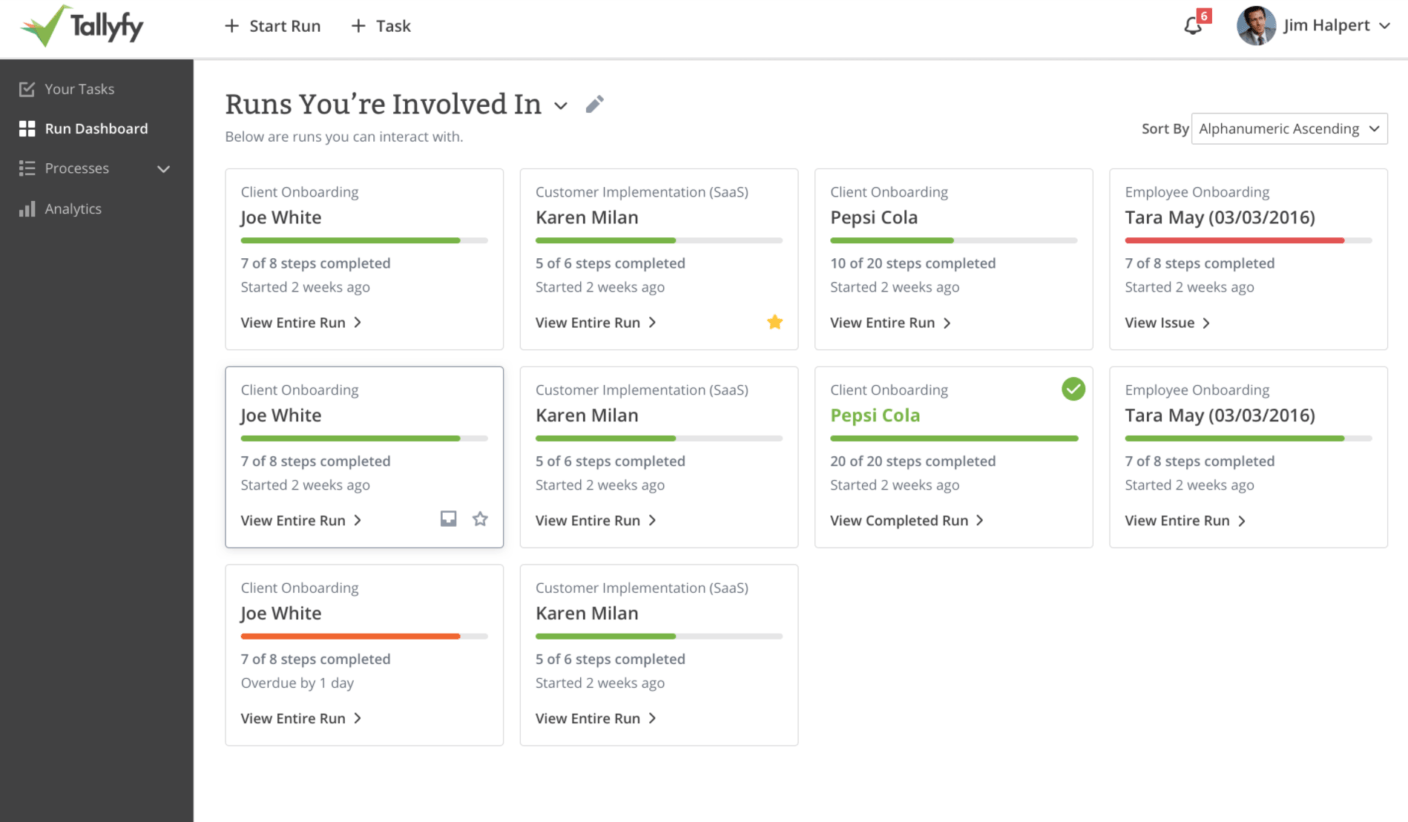
Once you’ve picked the format, you can start filling in the right sections…
- Processes & Procedures
- Business Policies – Note that these are business-specific, not social policies. Not accepting checks is a business policy, while vacation, benefits, etc. are social.
- Hierarchy & Roles
- Contact Details & Job Descriptions
- Emergency Procedures
Here’s what to mention in each.
Processes & Procedures
In most cases, this is the longest section of your operations manual.
Every business has a ton of processes – and all of them should be documented.
One way to do this is to do business process mapping. That is, create flowcharts which detail the exact steps your employees have to take in order to complete the process successfully.
You’d also want to include information on the steps. If the step in question is complicated, these should mention the details one executing it properly. So, things like…
- Use X Software
- You can find the right machinery in department Y
- Consult person X for advice on Y
- etc.
Or, you could completely skip on the section completely and use BPM Software to document the processes digitally.
Business Policies
The gist of this section is, how your business handles certain business-specific tasks.
Keep in mind, though, that business policies and social policies aren’t exactly the same thing. The later specifically deals with employee-related issues. Think, vacation policy, how you distribute bonuses, etc.
Several examples of business policies are…
- Only accepting bank transfers as payment
- Doing business only with companies from specific countries or regions
- Giving out specific pricings to companies of different sizes. SMBs get it cheap, enterprises pay more, etc.
Hierarchy & Roles
This one’s pretty straightforward.
You need to mention who’s in charge of what, who answers to whom, and so on.
The easiest way to do this is through a flowchart. Start from the very top (the CEO) and go down the chain all the way down to your average shop floor employee.
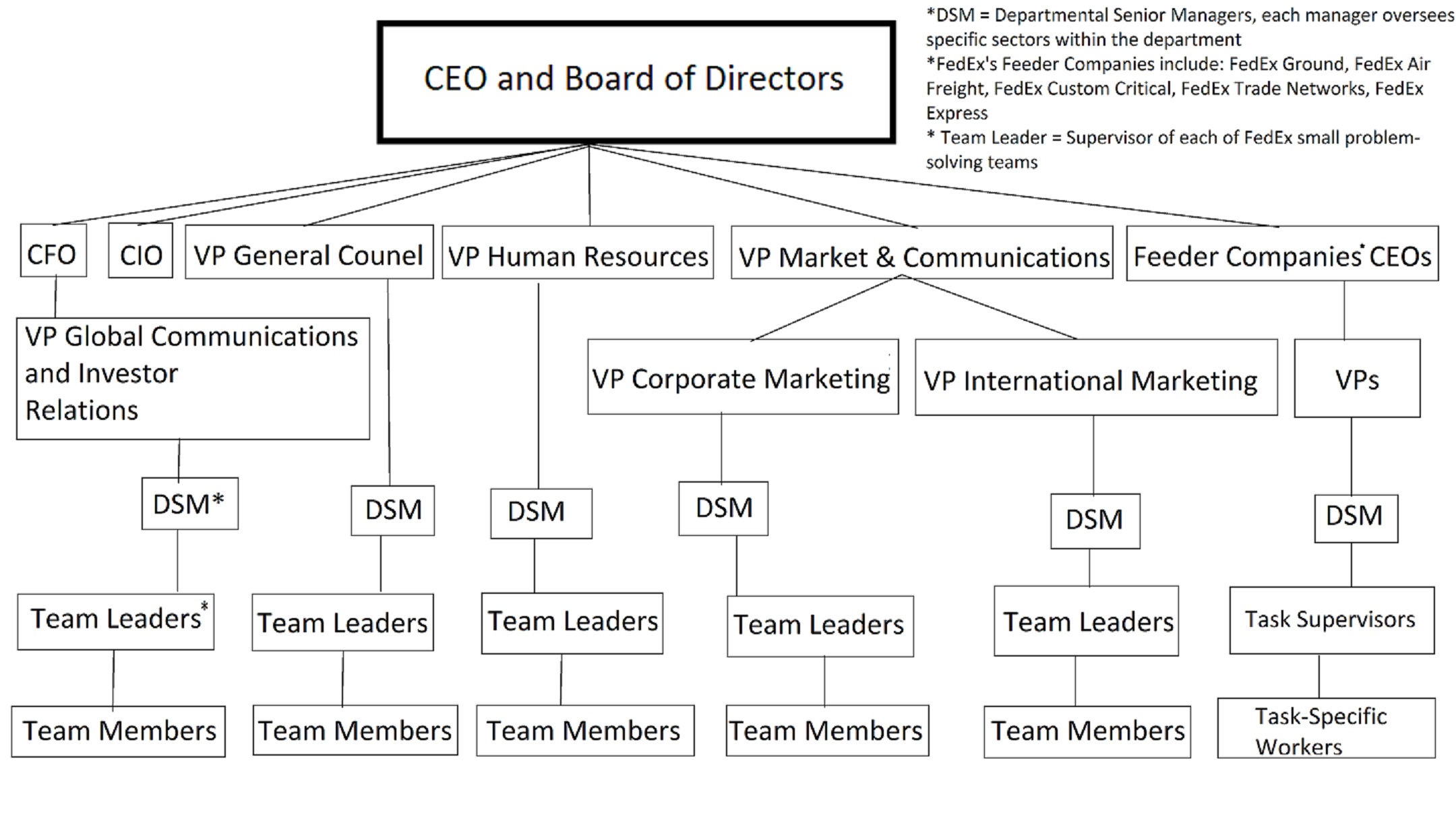
Contact Details & Job Descriptions
To make everyone’s life easier, you want to combine the “Contact Details” and “Job Descriptions” sections.
Keeping them separate is redundant: whenever you’re looking for a person with a specific position, you’re probably also interested in contacting them.
You could be looking for the security engineer to contact during a cyber-attack. It’s unlikely your employees will just randomly wonder “hey, I wonder who’s in charge of security in this company.”
So, you could create a directory of all the company employees, with their Name, Position, Job Description, and Contact Information.
Emergency Procedures
Even with all the procedures documented, you’re still going to have emergencies.
Sometimes, there is just bad luck. A manufacturing machine breaks down because it was faulty, not because someone messed up.
In this case, you need to have procedures set up so your employees can react quickly.
You don’t want them to sit around wondering…
“Does anyone remember what we were supposed to do in case of the servers being breached?”
What you want them to do is open up the operations manual, find the right procedure, and get it running ASAP.
Publishing the Operations Manual and Making “Findable”
You don’t want your office catchphrase to be “hey, has anyone seen that manual thingy?”
When publishing the manual, you want it to be as easy as possible to find.
So, if you’re going the online route, make it pinned on every company chat channel.
If you’re printing it out, on the other hand, give out a copy to all of your employees. To make sure that it’s within everyone’s reach (and no one loses it), keep one in every department office, somewhere extremely easy to find.
Once you’ve distributed the operations manual, pat yourself on the back. It’s been a long way, but you got the job done right!

